Willebrand's Disease In Dogs
Willebrand's disease in dogs. Testing of affected dogs can be done by Von Willebrand disease type 2 antigen testing or by coagulation assays but these procedures yield variable results. Described in dogs with mitral valve disease. What is von Willebrands disease.
Canine von Willebrands disease vWD is the most common inherited bleeding disorder of purebred dogs. Theres a name for this. The trait is most prevalent in the Doberman Pinscher Pembroke Welsh Corgi Airedale Terrier Scottish Terrier and Shetland Sheepdog but severely affected individuals or families have been identified in many purebred and mixed breeds Brooks et al 1992.
Sometimes called pseudohemophilia vWD is the most common inherited bleeding disorder in both dogs and humans. It was first discovered in 1926 nearly a hundred years ago by Erik von Willebrand. This protein is called von Willebrand Factor vWF.
Von Willebrands Disease or vWD is the most common inherited blood clotting disorder in both dogs and humans. Von Willebrands disease vWD is the most common inherited bleeding disorder of both humans and dogs. Partial or absolute lack of VWF - VWF dysfunction decreased platelet aggregation and adhesion primary hemostatic defect.
Von Willebrand disease has been described in over 50 breeds of dogs. Von Willebrands disease in dogs vWD is a hereditary blood-clotting disorder. Deficiency or dysfunction of Von Willebrand factor VWF sometimes known as Factor VIII related antigen.
Symptoms Signs. It is caused by a deficiency in the amount of a specific protein needed to help platelets the blood cells used in clotting stick together and form clots to seal broken blood vessels. Overview of Von Willebrands Disease VWD in Dogs Diagnosis of Von Willebrands Disease VWD in Dogs.
Blood component therapy most specifically the use of cryoprecipitate. Many dogs live a very normal life and owners dont even know their dog has a clotting problem until a blood draw surgery or injury occurs.
Testing of affected dogs can be done by Von Willebrand disease type 2 antigen testing or by coagulation assays but these procedures yield variable results.
It is caused by a deficiency in the amount of a specific protein needed to help platelets the blood cells used in clotting stick together and form clots to seal broken blood vessels. Von Willebrand disease is a hereditary condition in dogs passed down from the parents. It was first discovered in 1926 nearly a hundred years ago by Erik von Willebrand. Deficiency or dysfunction of Von Willebrand factor VWF sometimes known as Factor VIII related antigen. Von Willebrand Disease in dogs Introduction of von Willebrand Disease in dogs. Sometimes called pseudohemophilia vWD is the most common inherited bleeding disorder in both dogs and humans. It most closely resembles hemophilia in humans in that it can lead to massive amounts of bleeding following an injury due to the lack of clotting ability. It is a hereditary disease and is the most common hereditary blood disease in dogs. There is a protein that is known as von Willebrand factor VIII or von.
Overview of Von Willebrands Disease VWD in Dogs Diagnosis of Von Willebrands Disease VWD in Dogs. Testing of affected dogs can be done by Von Willebrand disease type 2 antigen testing or by coagulation assays but these procedures yield variable results. In 1925 a finnish doctor. Canine von Willebrands disease vWD is the most common inherited bleeding disorder of purebred dogs. Understanding Von Willebrands Disease in Your Dog Overview. There are three types of von Willebrand disease in dogs. Many dogs live a very normal life and owners dont even know their dog has a clotting problem until a blood draw surgery or injury occurs.

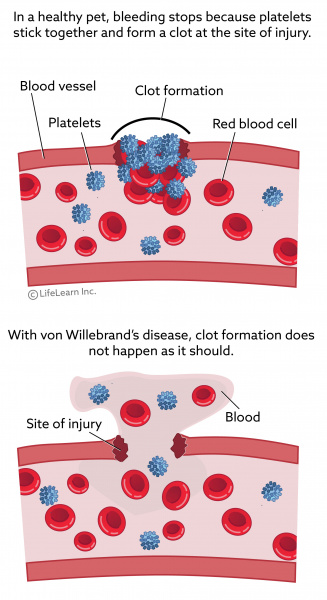
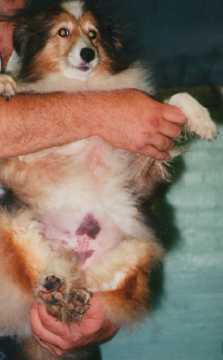
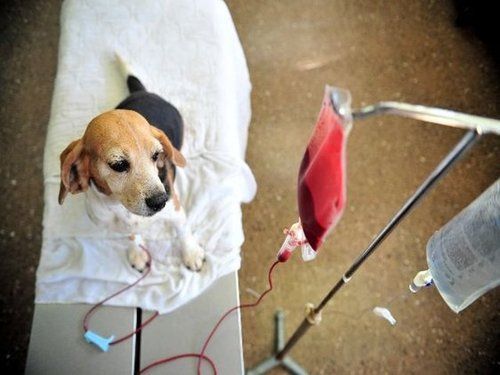
















/black-doberman-on-a-medical-exam-at-vet-s-office--504928506-59cb1108d963ac0011bfbc6b.jpg)

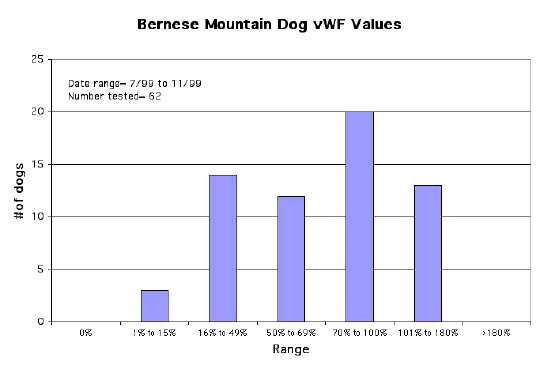










/GettyImages-688948069-5c6d6146c9e77c00018ccad0.jpg)



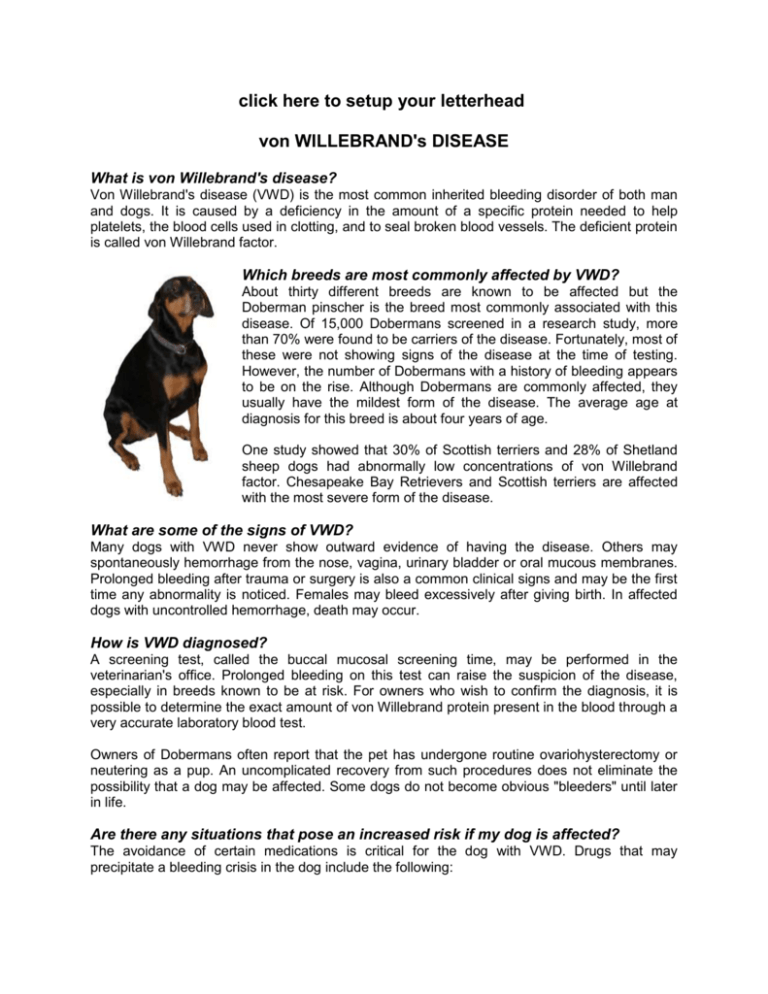


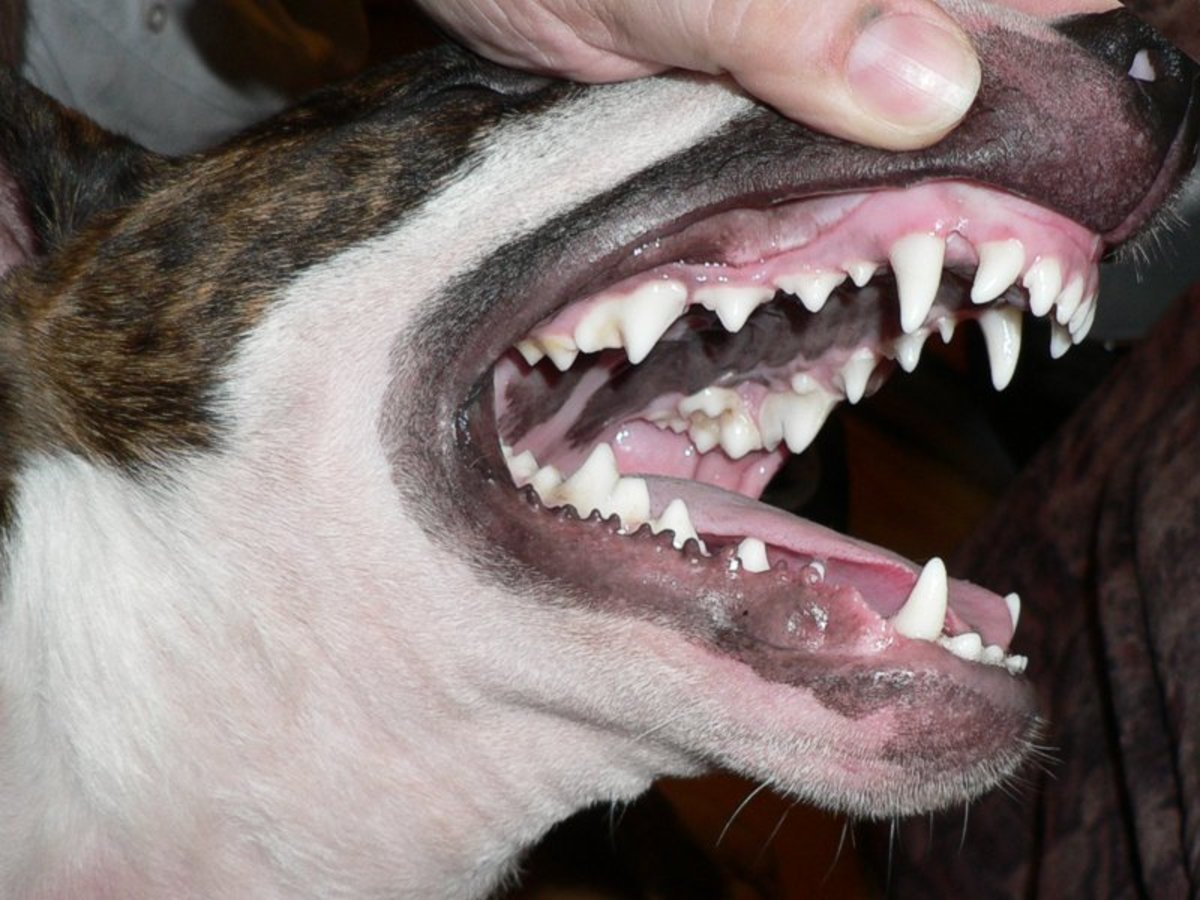





Post a Comment for "Willebrand's Disease In Dogs"